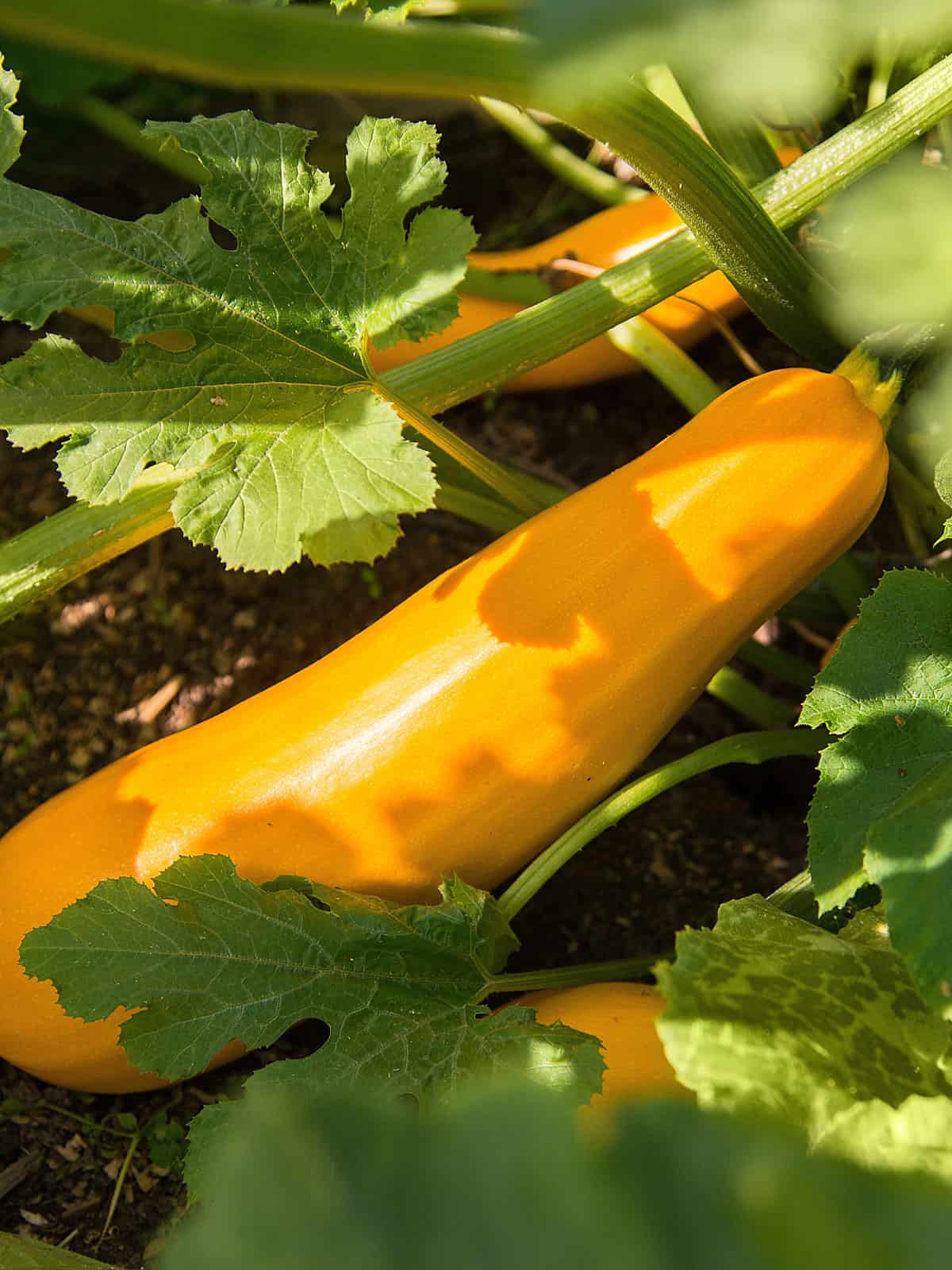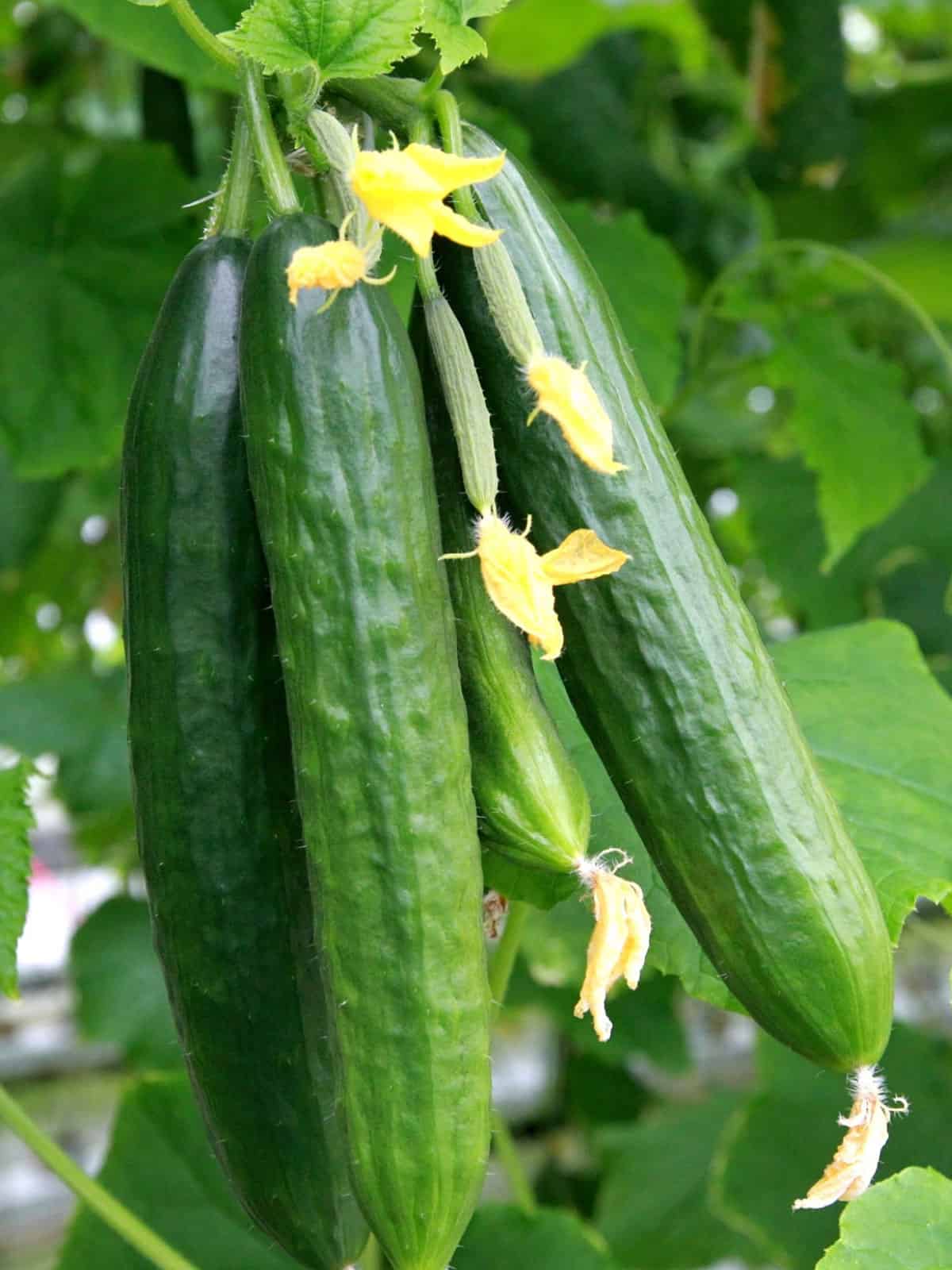Are you wondering whether squash and cucumbers can be planted together? The short answer is yes, but with some considerations.

While they make good bedfellows, certain aspects, like their different watering needs and potential pest and disease transmission, need attention.
As you venture into planting these garden favorites side by side, understanding the proper spacing, pest management, and support structures will guide you to a fruitful harvest.
Continue reading to learn more!
Can You Grow Squash and Cucumbers Together?
As we've briefly mentioned, squash and cucumbers can indeed grow together in one garden bed.
Both squash and cucumbers are members of the cucurbit family, including melons and pumpkins. This familial link suggests they have similar growing requirements, making them compatible garden companions.

Squash and cucumbers thrive in well-drained soil rich in organic matter. They both require full sun and regular watering, especially during the fruiting stage.
These similar needs make caring for them in the same area convenient (more on this below).
🪴 Interested in exploring more about companion planting possibilities? Dive into our detailed article, Can Cucumber and Cilantro Be Planted Together?
Benefits of Planting Squash and Cucumbers Together
Squash and cucumbers are compatible and offer several benefits when grown in close proximity.
Simplifies Garden Management
Planting squash and cucumbers together can lead to healthier plants and a better harvest due to their complementary growth requirements.
These two plants share similar growing conditions, which can simplify garden management as they require similar soil, water, and sunlight conditions.
They share several growing requirements:
- Sunlight: Both squash and cucumbers thrive in full sunlight. Ensuring a garden spot with ample daily sun is key to their growth.
- Soil: They prefer well-drained, neutral to slightly alkaline soil, with a pH of around 7.0. Adding organic matter like peat, compost, or rotted manure can improve the soil quality.
- Water: Both plants have deep root systems and require consistent watering. About 1 inch of water per week is recommended, soaking the soil to a depth of 6-8 inches.
Maximizes Space Use
If you like gardening in smart ways, think about this: cucumbers can climb on trellises while squash spreads out on the ground.
So they fit well together in your garden. Cucumbers grow upward, and squash takes up space on the ground, using both vertical and horizontal areas well.
Complementary Traits
They also have complementary traits that make them ideal gardening companions.
Squash leaves shade the ground, stopping weeds from growing.
Their big leaves cover the soil, which keeps weeds away. This is good news for your cucumber because there's less competition for food from the soil.
These traits contribute to their individual growth and the overall productivity and aesthetics of the garden.
The interaction between these two plants can lead to a thriving garden with healthy, productive, and visually appealing plants.
🪴 Want to start your own thriving pumpkin and squash garden? Get your seeds from the Top 50 Online Stores For Pumpkin And Squash Seeds!
Challenges of Planting Squash and Cucumbers Together
While planting squash and cucumbers together presents several advantages, it's essential also to be aware of the challenges that may arise.
Understanding these challenges can equip you with the knowledge to mitigate them effectively, ensuring a fruitful gardening experience.
Here are some challenges to consider:
Pests and Disease Transmission
Both plants belong to the same botanical family and are susceptible to similar pests and diseases.
An infestation might spread rapidly between the squash and cucumber plants, affecting your garden's overall health and productivity.
Regularly monitoring signs of pests and diseases and taking prompt action when issues are identified can help manage this challenge and ensure both crops' health.
Potential Overcrowding
Both squash and cucumbers are sprawling plants. Squash, in particular, can take up a lot of ground space with its large leaves and vines.
This can lead to overcrowding if not managed properly, hindering the growth of both plants.
Using vertical space for cucumbers can help, but proper spacing and organization are needed to ensure each plant has enough room to grow, which we'll cover just below!
How Far Apart Should Squash and Cucumbers Be Planted Together?
When planting cucumbers and squash together, the typical row spacings can range from 3 to 10 feet apart.
Cucumbers typically require in-row plant spacing of 12-18 inches. For squash, the spacing depends on the variety: summer squash should be planted 24-30 inches apart, while winter squash needs more space, about 30-48 inches apart.
Planting them at this distance helps ensure adequate air circulation, which is beneficial in preventing diseases and deterring some harmful insects.
🪴 Are you curious about the culinary possibilities of cucumber seeds? Explore our article Can You Eat Cucumber Seeds?
It also significantly ensures that cucumbers and squash obtain the necessary resources for healthy growth.
Especially since cucumbers are heavy feeders with shallow roots, the adequate spacing helps mitigate competition for essential resources like water and nutrients.
Best Practices When Planting Squash and Cucumbers Together
When planting squash and cucumbers together, there are several best practices that you should follow to ensure a successful harvest.
Proper Spacing
As we've shared, giving your squash and cucumber plants enough space to grow is essential. Squash plants can take up a lot of room, so ensure they have at least 12 inches of space between each plant.
Cucumber plants are a bit smaller, so they can be planted a little closer together, with about 24 or 30 inches in minimum between each plant, depending on the variety.
Again, space your cucumbers and squashes at least 3 or 10 feet apart to allow for proper air circulation and prevent disease spread.
Pest and Disease Management
Squash and cucumbers are susceptible to various pests and diseases, so practicing good pest and disease management techniques is essential.
One way to do this is to rotate your crops each year, planting squash and cucumbers in a different spot in your garden each season.
Keep your plants well-watered and fertilized to help them stay healthy and strong.
Support Structures
Squash and cucumber plants can benefit from support structures like trellises or cages. This can help keep the plants off the ground, preventing disease and making harvesting easier.
When choosing a support structure, select one that is sturdy enough to hold the weight of your plants as they grow.
You can also use natural materials, such as bamboo or twine, to create your support structures.
Want your own sturdy trellis? Get one by clicking the link below!
In Closing
Planting cucumbers and squash side by side is entirely doable and can benefit your garden.
It's essential to acknowledge that both plants can spread across your garden. So, give them enough room to grow without crowding each other.
With thoughtful planning and care, growing cucumbers and squash together can be a straightforward and effective way to make the most of your garden space and enjoy a bountiful harvest!

